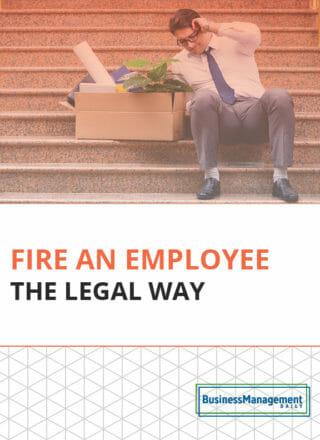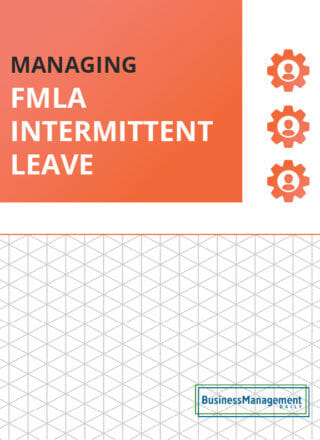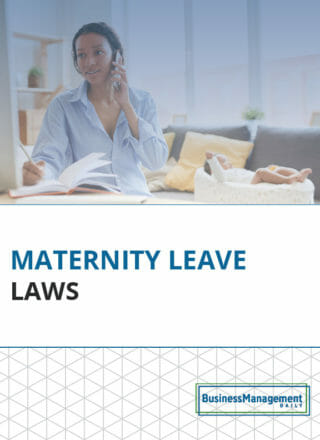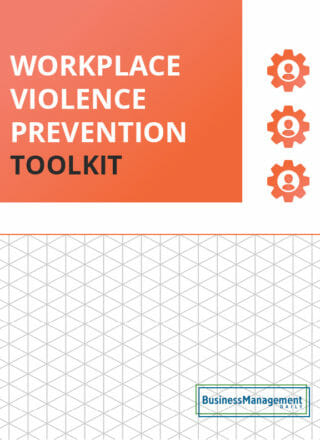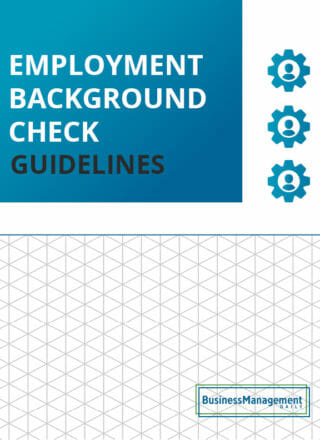Work break laws: FLSA requirements and variations in state law
Crafting a compliant work break policy
Your employees work hard, and they deserve a break. But what exactly are your legal responsibilities surrounding rest breaks and meal periods? The answer can vary quite widely based on where your business is located.
Most people assume there are cut-and-dry federal laws regarding break times and lunch hours. After all, the FLSA is usually quite specific in its requirements regarding issues such as employee classifications, minimum wage, and overtime pay. However, the guidelines around breaks can be vague, leaving much room for flexibility and confusion for employers.
We’ve compiled the key information if you’re unsure how to determine your obligations or craft your work break policy. We’ve also added some helpful tips for employers to consider when deciding whether to offer more than the minimum required breaks.
Federal work break laws under the FLSA
Federal law does not require rest or meal breaks for adult employees. However, many states have their work break laws. Nearly half of states mandate that you provide employees with rest or meal breaks. Be sure to check all local and state laws when crafting your break policy.
It’s also helpful to remember that even if breaks aren’t legally required, offering them anyway is probably a good idea to keep your employees happy. This is especially relevant for employees who are frequently on their feet and those working outside in extreme weather who may need breaks to avoid potential health risks.
One interesting thing to remember is that while federal law does not require employers to provide meal breaks, the Fair Labor Standards Act provides guidelines on whether or not breaks should be considered as work time and paid. Under the FLSA, employers don’t need to count meal periods lasting 30 minutes or more as work time if the employee is completely relieved from duty.
For example, you require someone to assist customers or take business calls during lunch, you must count those minutes as paid time. Coffee breaks or rest periods lasting 20 minutes or less are also considered time worked. Employees on-call during breaks must also be compensated.
If work breaks aren’t required, why should employers offer them?
If the FLSA does not require employers to offer lunch breaks or rest breaks, why do so many employers still offer them? For one, many states have their break requirements that employers in the state will need to follow. Twenty-one states currently require meal periods for adult workers, and 35 states have break provisions for minors. There are also seven states that require additional short rest breaks.
However, even employers in the states without rest break laws frequently voluntarily offer employees work breaks. There are several reasons why this is often a good choice.
Prioritizing employee wellness and improving performance
Breaks give employees time to recharge, fuel themselves, and enjoy a quiet moment away from their work. This is important for the employee’s well-being. After all, most people work up an appetite during the workday, especially in fast-paced roles.
Workers who are hungry or overly fatigued are most likely to make mistakes, provide poor customer service, or exhibit decreased productivity. Employees working outside, especially in extreme heat, could become overheated and suffer other health risks without breaks to cool off. None of these side effects are good for businesses.
In roles that involve personal or public safety concerns, denying workers breaks may also increase liability since workplace accidents can be costly for employers.
Boosting employee satisfaction and retention
Employees who don’t receive breaks are more likely to feel overworked or underappreciated, leading to poor employee satisfaction ratings. The extra 30 minutes or so you gain in productivity by skipping work breaks may end up costing you more later in lost productivity if it leads to turnover.
After all, replacing an employee can cost one-half to two times their annual salary in recruiting costs and lost productivity. You ideally want employees to leave work feeling fulfilled and accomplished, not like they’ve been running on empty for the last 8 hours without adequate rest or food.
Remaining competitive in recruiting
If you are an employer in an area without state or local work break laws, or even if your state does require breaks, it’s a good idea to look into what other employers in your area and industry offer regarding breaks.
If you choose not to offer breaks while competitors provide lunches and paid 15-minute breaks, you might have trouble attracting talent.
Just as generous PTO policies are becoming a top recruiting tool, a generous break policy can make you look like a great employer to prospective hires. Some companies operate in fields like tech.
These companies are becoming particularly flexible. Furthermore, they are advertising this flexibility. Specifically, they allow long lunches. They also allow flexible mid-day breaks. This allows employees time to do various things.
For instance, they can attend a midday workout class. Additionally, they can go to a doctor’s appointment. Importantly, they can do these things without clocking out. See what others in your region and industry are doing to guide your break policy.
Team building

While this largely won’t apply to remote teams, in-person teams often do a lot of team building during breaks and lunches. Break rooms and lunch breaks allow employees to strike up conversations with people they may not frequently work directly with during the day. They also offer an opportunity for co-workers to build more meaningful personal friendships.
Harvard Business Review explored the benefits of work friendships and found that they positively impact employee productivity, satisfaction, and retention.
Giving employees 15 or 30 minutes to foster workplace relationships can help strengthen these bonds and build morale in the workplace.
State work break laws
A wide range of state laws have varying break requirements and specificity levels. Some have special rules for minors, certain industries, or even based on an employee’s start time. Let’s explore some different examples of notable state rest break requirements.
Visit the Department of Labor’s meal break directory for a full list of meal break requirements by state. Not all states have work break laws, so employers can refer to the FLSA guidelines.
California work break laws
Employees are entitled to a paid break for each four-hour period worked. These breaks must last at least ten consecutive minutes, and the employee should be relieved of all job duties and not interrupted during this time.
California employees who work more than five hours a day are also entitled to an uninterrupted 30-minute meal period. This break does not have to be paid.
It may also be waived by mutual consent between the employee and employer if the worker works six hours or less. Employees who work more than 12 hours a day are entitled to a second meal break.
Colorado work break laws
In Colorado, employees are entitled to an uninterrupted and duty-free meal period lasting at least 30 minutes if their shift exceeds five consecutive work hours. The law states that meal periods should be offered at least one hour after the employee’s start time and one hour before the end of the shift, where practical.
If the nature of the business activity or other circumstances makes an uninterrupted meal period impractical, the employer must allow employees to consume an on-duty meal while working.
Employees who work over two hours are entitled to a paid 10-minute rest break. Employees must receive a 10-minute break for each four hours or a significant fraction of their four-hour work period. The Colorado Department of Labor and Employment states that rest periods should be in the middle of each 4-hour work period to the extent possible.
Delaware work break laws
In Delaware, employees who work 7.5 consecutive hours are entitled to a half-hour break. This break must be provided after the first two hours of the shift and before the last two hours of the shift.
Delaware does provide several exemptions, including for:
-
Certain professional employees are certified by the State Board of Education.
-
Workplaces covered by a collective bargaining agreement or other mutual agreement.
-
Circumstances where providing said break would adversely affect public safety.
-
Workplaces where only one employee may perform the duties of a position.
-
Companies that have fewer than five employees on a shift at a single place of business.
-
A business’s continuous operations require employees to always respond to urgent or unusual conditions. In such instances, the employees may remain on-call but should be compensated for their meal periods.
Illinois work break laws
Illinois updated its work break laws in January 2023, so Illinois employers may want to double-check their work break policies to ensure that they are complying with the updated laws.
Employees who work shifts of at least 7 and a half continuous hours are entitled to a meal break of at least 20 minutes no later than 5 hours after the start of their shift. Employees who work a 12-hour shift or longer are entitled to a second meal period of at least 20 minutes.
Kentucky work break laws
Kentucky employees are entitled to one paid 10-minute rest period for each 4-hour work period. They are also typically entitled to an unpaid 30-minute meal break between the third and fifth hours when working a shift longer than five.
Massachusetts work break laws
Workers in Massachusetts have a right to a meal break lasting at least a 30-minutes if they work more than six hours during a calendar day. Employees may agree to work through their meal breaks but must be paid for the break time.
Payment is also required for breaks if the employer requires the employee to stay at their worksite during the break. Exclusions are provided for iron works, glass works, paper mills, letterpress establishments, print works, and bleaching or dyeing works. Factories may also seek an exemption from the state’s attorney general.
New York work break laws
New York is an interesting example, as the state actually sets special guidelines for certain industries, shifts, and job types.
The New York rest period requirements are:
-
Factory workers are entitled to a 60-minute meal break when working six or more hours.
-
Non-factory workers are entitled to a 30-minute lunch break between 11:00 a.m. and 2:00 p.m. for shifts six hours or longer that extend over that period.
-
Non-factory workers who work shifts of more than six hours between 1:00 p.m. and 6:00 a.m. are entitled to a 45-minute meal break midway between the beginning and end of their shifts.
-
All Workers are entitled to an additional 20-minute meal break between 5:00 p.m. and 7:00 p.m. for workdays that extend from before 11:00 a.m. to after 7:00 p.m.
Oregon work break laws
Oregon has very detailed work break requirements. Non-exempt employees working six or more hours are entitled to a meal period of at least 30 minutes For shifts lasting six hours or more but less than seven hours. The meal period must be taken after the second hour worked and before starting the fifth hour of work.
For shifts longer than seven hours, the meal period should be taken after the third hour worked and before the sixth hour of work. Employers must also provide an additional meal period to employees working 14 hours or more in a shift.
Oregon law requires that employees be relieved of all duties during the meal period. However, under exceptional circumstances, Oregon law allows an employee to perform duties during a meal period. If that occurs, the employer must pay the employee for the entirety of the meal period.
Employees are also entitled to a break of 10 minutes or more for every four hours worked (or major part of four hours, defined as two hours and one minute through four hours). This break must be offered separately from the meal break and should be in the middle of the four-hour period where possible.
Per Oregon state law, an employer is not required to provide a rest period to an employee if all of the following conditions are met:
-
The employee is 18 years of age or older;
-
The employee works less than five hours in any period of 16 continuous hours;
-
The employee is working alone;
-
The employee is employed in a retail or service establishment, i.e., a place where goods and services are sold to the general public, not for resale; and
-
The employee is allowed to leave the employee’s assigned station when the employee must use the restroom facilities.
Rhode Island work break laws
Rhode Island is one of the few states that has different lunch break durations based on the employee’s shift length. Employees who work a six-hour shift in Rhode Island are entitled to a 20-minute meal break, while those working eight hours are entitled to a 30-minute meal break.
This requirement does not extend to employees working in healthcare facilities or companies employing less than three employees at one site during a shift.
Tennessee work break laws
Tennessee state law mandates a thirty-minute unpaid meal break. This applies if an employee is scheduled for six consecutive hours. However, the state offers an exception. Specifically, this exception applies to certain work environments.
These environments, by their nature, provide ample opportunity for rest. They also provide opportunities for appropriate breaks. Therefore, in these specific instances, a formal break period is not required.
Vermont work break laws
Vermont has relatively vague work break laws. When no state law on work breaks is in place, policies can typically default to the FLSA guidelines. However, the FLSA does not require breaks at all, and Vermont state law dictates that employees be given “a reasonable opportunity” to eat, rest, and use the bathroom.
Therefore, Vermont employers should err on the side of caution and provide at least a short meal break unless the nature of the position allows frequent breaks and the ability to eat on the job during downtime.
Virginia work break laws
Virginia is another state that typically defaults to FLSA guidelines for work breaks. However, like several other states that don’t have adult work break laws, Virginia does require breaks for minors. In Virginia, employees under 16 are entitled to a 30-minute meal break after working five hours.
Washington work break laws
Washington employees must be allowed a paid break lasting at least 10 minutes for every 4 hours worked. They are also entitled to a 30-minute break when working more than 5 hours. This meal break should be provided after the second hour but before the fifth hour of the shift.
The meal break can be unpaid as long as the employee is relieved of all duties and able to leave the worksite if desired. Employees working three or more hours beyond the regular workday are entitled to a second 30-minute break before or during their overtime.
Sample work break policy
The company’s policy is to comply with all applicable laws regarding work breaks and lunch periods. All employees must take their set work breaks during the required time slots and document any breaks of 30 minutes or more on their timesheets.
All employees working a full day will receive a 30-minute unpaid lunch break and two 15-minute paid breaks. Lunch breaks should be taken during the middle of your work shift before the fifth hour from your start time.
Employees working half-day will not receive a lunch break but are still entitled to a 15-minute break. Employees should aim to take this approximately two hours into their shift.
The employees are responsible for letting their direct supervisor, or the supervisor on duty, know that they will be going on break. Employees may leave the premises during their break periods but must return by their designated return time. Employees who extend their breaks beyond the allocated time without authorization may be subject to disciplinary action.
Additional work break requirements and considerations
Beyond the state and federal laws and business considerations, a few other factors may impact employee work breaks.
Work breaks and the ADA
In addition to the standard legally required work breaks, companies should also be aware of their responsibilities under the Americans With Disabilities Act (ADA). The ADA requires employers to provide reasonable accommodations to employees with disabilities. For ADA accommodation purposes, a disability is defined as a condition that interferes with one or more major life activities.
One of the more common reasonable accommodations offered under the ADA is extra break times. For example, an employee with arthritis or carpal whose job primarily involves typing may receive short hourly breaks to help limit joint pain and prevent injury. Employees may also need extra breaks to check blood sugar or take medication.
ADA accommodations generally need to be provided unless doing so would put undue hardship on the employer. Added breaks are a consideration.
For example, an employee may regularly work alone. If so, and they take extra breaks, this may require the business to temporarily close. Alternatively, it might require major changes in the staffing schedule.
Moreover, these changes could involve extra costs. Employers may argue that offering this accommodation would create an undue hardship for the business.
Work breaks for lactating mothers.
 The FLSA does not typically require work breaks. Nor does it usually require meal periods. However, labor law does dictate certain requirements.
The FLSA does not typically require work breaks. Nor does it usually require meal periods. However, labor law does dictate certain requirements.
Specifically, employers must provide unpaid break time. Additionally, they must provide space.
This space is for nursing mothers. They need it to express breast milk. This protection extends for one year after the child’s birth. Furthermore, if employers already provide paid work breaks, an employee may use that time to express milk.
In that case, the employee must be compensated. The compensation must be the same. It should be the same way other employees are compensated for break time.
Finally, some states have additional guidelines. These guidelines may extend these protections. They may provide further support for lactating mothers..
Union rules
Employees may be unionized. If so, they work under a collective bargaining agreement. Furthermore, this agreement may contain additional guidelines.
These guidelines concern the length of rest breaks. They also address the frequency of rest breaks. This topic is usually negotiated and agreed upon in bargaining agreements.
Any business employing union laborers should ensure they are clear on all required break period requirements.
More resources:
Understanding new-collar jobs: A path to success without a degree ![]()
Right to disconnect: Growing movement for work-life balance laws ![]()
3 recent FMLA lawsuits that employers need to be familiar with ![]()
Want more insights like these? Visit Kaylyn McKenna’s author page to explore her other articles and expertise in business management.

